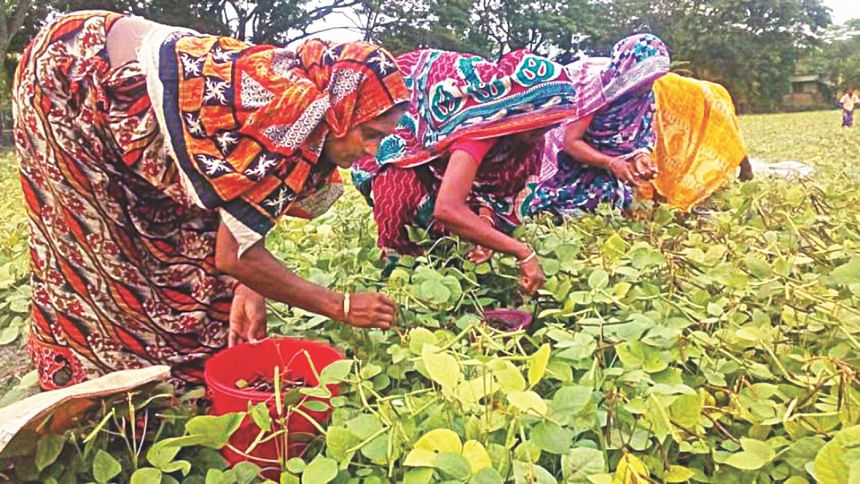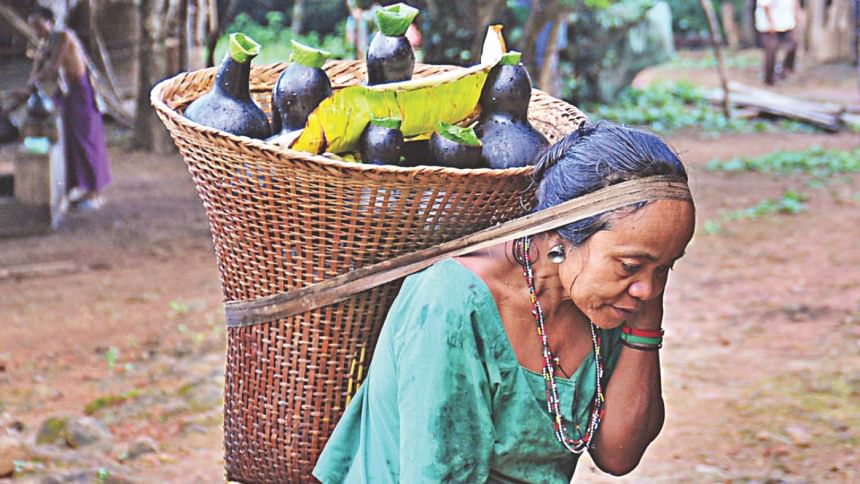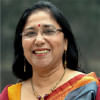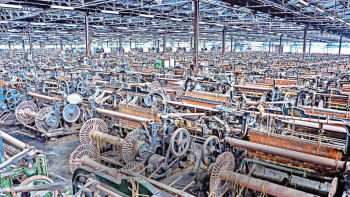Women's work: Unrecognised and undervalued

Conventionally, work is defined as any activity undertaken in lieu of remuneration. The value of work is determined by the level of remuneration. Therefore, any work undertaken without remuneration is considered non-valuable and non-work. On the other hand,any work done outside, such as office, factory, fieldis considered more valuable then work done at home. The conclusion therefore is, men work outside, get remuneration so their work is valuable. Women work at home, get no remuneration, therefore their work is considered non-work having no or little value.
This is the reality of women's work across the world. Their contribution to the family and society is not valued as most of their work is considered as household work which as women and the role given to them by society they are obliged to perform. It remains unseen, invisible and unrecognised and in conventional terms, yielding no economic benefits.
The under valuation of women's work is a global phenomenon. Based on several research and surveys, women produce 60-80% of basic foodstuffs in sub-Saharan Africa and the Caribbean and perform over 50% of the labour involved in intensive rice cultivation in Asia. Women head 60% of households in some regions of Africa and meet 90% of household water and fuel needs in Africa. They also process 100% of basic household foodstuffs in Africa.
However, in spite of these statistics, 500 million women in the world live below the poverty line in rural areas. One is four women will experience physical violence during their life time and the phenomenon of 'missing women', where girl children are subject to foeticidethrough sex selection in many parts of the worldis still in force. The reason is, women in general are not valued. Their contributionto the family and society remains unevaluated, unrecognised and undervalued. An objective evaluation of women's work in all its many dimensions is rarely undertaken. Because of lack of evaluation, it does not get the respect, appreciation and status that it deserves.
In Bangladesh, the scenario is not very different. There is no doubt that women have made great progress in the last two decades. They have attained a level of political, social and economic empowerment and today, there are many more options open for women then ever before. Yet, in their personal lives,their decision making ability is severely constrained by traditions, norms and customs leaving millions of women disempowered. Women continue to face discrimination and violence in their private and public lives. The BBS a study in 2013 reports that about 60% women are subjected to physical violence by their spouse or close relatives. 65% girls are married before the age of 17 or 18, which is child marriage, and according to reports, there has been 803 incidents of rape since January to November 2015. (source Ain O Salish Kendro)
Violence and discrimination against women revolves around their status in society and in their families. Women face violence and discrimination because of lower status as compared to males. One of the reason is non-recognition of their contribution to society or to their families. The non-recognition of their contribution leads to devaluation and disrespect resulting in discrimination and violence.
In spite of taking on the major burden of household work, such as caringfor children and the elderly, cleaning, looking after poultry, cattle etc. including the many activities related to food production and preservation, women's work remains invisible as most of these activities are performed behind the four walls of their homes.According to Mr. ShykhSeraj, a noted agriculture expert, the entire process of rice production requires 22 activities, from sowing of seed to bringing paddy home as food. Out of these 22 activities 17 are performed by women. The world recognises and creditsBangladesh having attained self sufficiency in food production. If 17 out of 22 activities are performed by women, who should get the major creditfor this miraculous feat? Incidentally,the Banglaword kishani or woman farmer is not in usage, farmer or krishakis synonymous with men.Women are considered helpers to farmers, if at all.

Everything that a woman does at home is considered as household work.Ironically, what should be recognised as productive work having economic implications such as taking care ofcattle, poultry, including agriculture activities is also considered householdor “shangsharerkaaj” or care work. As she does not take her product to the market, does not get paid for her labourshe remains,as economists will explain, “out of the System of National Accounts” (SNA). Remaining out of the SNA means her contribution is economically invisible and not counted in the GDP.
A recent study conducted by Centre for Policy Dialogue (CPD) for ManusherJonno Foundation revealed that on an average a female member of a household undertakes 12.1non SNA activities, the corresponding figure for a male member is only 2.7. The study goes on to summarise that the estimated value of women's unpaid non SNA (household)work if monetised would be equivalent to 76.8 to 87.2% of GDP (FY 2014-2014).However, the most stunning finding of the study is “if women's unpaid work were to be monetised it would amount to 2.5 or 2.9 times higher than the income of women received from paid services. For example, if a woman received remuneration of Tk. 5000 per month for her work in the garment factory the corresponding amount for a woman's unpaid work if monetised would be Tk. 15000!
The non-recognition of women's work has led to their marginalisation as a productive force although they are by and largeresponsible for the food security, health and well being of the family and community.The invisibility of their contribution has led to their devaluation and not getting the honour and respect they deserve at home and in society. On the other hand, there are approximately 20 million rural women employed in forestry, fisheries and agriculture labour. The situation is no better for them. Their work is backbreaking, remuneration is less than that of men for the same amount of work and yet when they go home they are required to perform all the duties and responsibilities that society as accorded to them as wives, mothers and home makers. The meagre salary they earn is spent for the well being of their family, leaving them poor, disempowered and in ill health.
The situation of the 4.5 million women working in the garment industry is slightly better because of the relative independence and freedom they enjoy. However, thousands are stuck in unskilledlow paying jobs with little option to graduate to higher level of efficiency. Because a majority of women are unskilled or semi-skilled with low level of remunerationtheir contribution to the GDP is meagre.
In order to change the situation of women, socially, economically and politically, radical policy support is required side by side with campaigns and awareness raising activities. The mind-set and attitude of society towards women must change to a more positive one. Women's work has to be appreciated and respected no matter where they work, at home, in the field, in factories or offices. It is a sad reality that even in this age and time families are unhappy at the birth of a girl child and would rather prefer a male child. However, there is every chance that it is this girl child who will grow up someday and bring pride to the family. She will most probably take care of her parents and against all odds stand by them in times of crisis. Everyday we hear and read stories of women's strength and resilience in keeping the family together, nurturing and looking after every member. And what do they get in return? abuse, violence, intimidation and humiliation.
Another important aspect of recognising women's contribution is to change the way the present system of national account is determined (SNA) which needs to be revisited in order to include all of women's work, both paid and unpaid so that their contribution is included in the GDP. This will require international as well as national lobbying. The SNA is calculated by the United Nations and follows a standardised format for all countries. In the present system of calculation women's unpaid work cannot be counted resulting in the invisibility of a vast dimension of women's work which is unpaid. The issue of women's unpaid work and its invisibility is now being debated worldwide. Many countries are coming up with systems to give it monetary value. However, results are inconclusive and economist have yet to come up with a formula to include their work in the GDP.
Society needs to understand that women play several roles. One is reproductive—ranging from giving birth to all the care work she performs at home. The other is productive—also performed at home but with huge economic implications. Both these rolesare equally important to society and the family and have to be recognised. The invisibility of women's work in all its dimension has led to their lower status and disrespect. Appreciation of women's work has to start at home by family members. It is in her home that she needs to be respected and honoured for her contribution. This will result in raising her status not only in the family but in society as well, and thus reduce discrimination and violence against them. On the other hand, economists will have to come up with a formula to monetise women's unpaid work and recalculate the System of National Accounts to include it in the GDP. This will increase the size of the GDP and our growth rate figures and women will get recognition for their multifaceted contribution.
The writer is Executive Director, ManusherJonno Foundation

 For all latest news, follow The Daily Star's Google News channel.
For all latest news, follow The Daily Star's Google News channel. 



Comments